Best Ultrabooks in 2024: All the bite, but thin and light
These are the best Ultrabooks you can buy right now
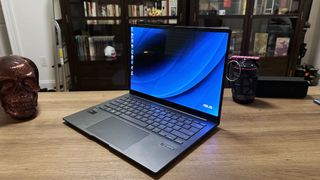
1. The list in brief
2. Best overall
3. Best budget Ultrabook
4. Best 2-in-1 Ultrabook
5. Best business
6. Best Ultrabook for video editing
7. Best Ultrabook alternative
8. How to choose the right Ultrabook
9. How we test Ultrabooks
10. Why trust Laptop Mag?
Spots on our list of the best Ultrabooks are reserved for only the elite of laptops, Intel-powered machines so thin and powerful they dance between all-day marathons and peak performance. Whether you're a caffeine-fueled nomad or a jet-setting pro, an Ultrabook's your perfect partner, keeping pace with your relentless hustle. Forget clunky beasts weighing you down — these sleek speedsters let you conquer your to-do list with style and stamina. Think thin, think powerful, think Ultrabook.
But beyond thin and light, what is an Ultrabook? An Ultrabook used to mean a laptop that fit a very particular set of standards laid out by Intel. However, the moniker has been watered down, and the term is loosely applied to premium laptops that meet the thin and light standards.
Our selection isn't too different, however, we've also tried our best to pick Intel Evo-certified laptops — a more modern Intel platform that requires premium laptops to adhere to a strict set of standards including energy efficiency, fast charging, and responsiveness.
If you're looking for something thin, light, powerful, and portable, read on for our selection of the best Ultrabooks in 2024.

Rael Hornby brings decades of tech tinkering and enthusiasm to the table, as well as a broad history of technical support, web design, and journalism. As Laptop Mag's content editor and resident accessory reviewer, he interacts with several laptops to measure their strengths or weaknesses and see how peripherals can further enhance their potential.
Best Ultrabooks in 2024: The list in brief
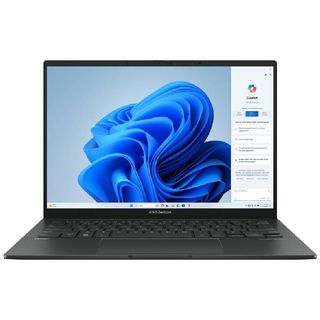
Best Ultrabook overall
The Zenbook 14 OLED's impressive near 16-hour battery life headlines its many great qualities. Intel Core Ultra performance and an attractive price tag are also sure to impress.

Best budget Ultrabook
A flattering price tag, Intel Core Ultra performance, and a 15-hour battery life solidify Dell's Inspiron 14 Plus as a top-tier budget buy and a solid all-around Ultrabook option.
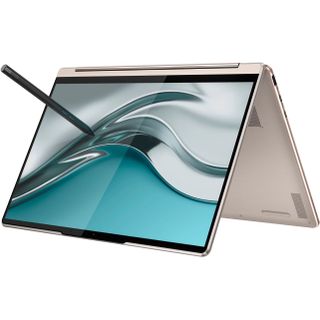
Best 2-in-1 Ultrabook
The eighth generation of Lenovo's iconic Yoga 2-in-1 features a mighty 13th-generation Intel Core i7 CPU and a genuinely jaw-dropping 2880 x 1880 OLED display.
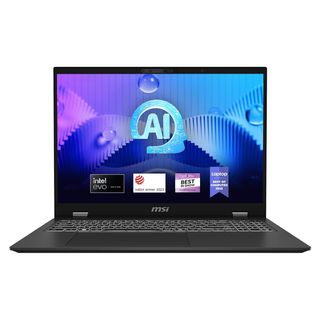
Best Ultrabook for business
MSI's AI PC consistently scored well above average performance across our testing. It is outfitted with an NPU to deliver AI performance enhancements and a dazzling 4K OLED display.
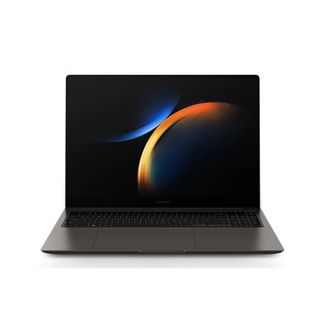
Best RTX 4050 Ultrabook
The Galaxy Book 3 Ultra packs an incredible amount of power, thanks to the performance of its 13th-generation Intel Core i7 processor and Nvidia GeForce RTX 40-Series graphics.

Best Ultrabook alternative
We know. While not technically an Ultrabook, seeing as it doesn't sport an Intel CPU, it's still a brilliant alternative that pushes the MacBook to new heights with the M3 chipset.
The best Ultrabooks in 2024
Why you can trust Laptop Mag
Best Ultrabook overall



Specifications
Reasons to buy
Reasons to avoid
Ever the tinkerers and tweakers of technology, Asus has once again updated its popular Zenbook laptop to feature Intel's latest Core Ultra chipset with Arc graphics, quality audio from Harman Kardon with Dolby Atmos speakers, and an OLED display.
The new Core Ultra 7 155H chipset, backed by 16GB of RAM and 1TB of SSD storage, offers solid performance across the board, making the Zenbook a fantastic option for most people for all but gaming and content creation.
However, Intel's latest chips are multitasking monsters and fly above the category benchmark averages in overall performance, video transcoding, and file transfer speeds.
Better still, the Zenbook 14 OLED's enhanced performance comes hand in hand with an incredible near-16-hour battery life — delivering a fantastic all-day computing option to most. This gives you the confidence to make the most of the Zenbook's portability from its trim (12.3 x 8.67 x 0.59 inches) and lightweight (3 pounds) frame.
Sweetening the deal further is the Zenbook's 14-inch, full-HD, OLED touchscreen display, which offers solid contrasts with crisp and vibrant colors. It's not perfect — the panel itself could be brighter — but issues like this can be forgiven when you factor in the Zenbook's secret weapon: a $799 starting price.
Asus' laptop strikes an incredible balance of performance, price, and practical use. It has great longevity of life and across-the-board improvements in key metrics. While it might not be the best laptop, the Zenbook 14 OLED is the best Intel Evo Ultrabook when factoring in its low cost and strong results.
See our full Asus Zenbook 14 OLED (Q425M) review.
Best budget Ultrabook



Specifications
Reasons to buy
Reasons to avoid
The term Ultrabook likely paints the image of an ultra price tag to go along with it. However, that's not the case. Most Ultrabooks lack a discrete GPU, meaning their costs can be far less than that of gaming, creation-class, or workstation laptops.
One gleaming example of a fantastic Ultrabook that won't empty your bank account is the Dell Inspiron 14 Plus, touting performance and battery life above and beyond its MSRP.
Starting with performance, the Inspiron 14 Plus is powered by Intel's new Core Ultra 7 155H CPU and backed by 16GB of RAM and 1TB of SSD storage. Intel's Core Ultra chipsets offer improved performance and efficiency, which is the secret to the Inspiron's impressive performance in our benchmark tests.
Those tests saw Dell's modestly priced laptop outpace the Asus Zenbook 14 OLED (Q425M) that tops this list and Apple's M3-equipped MacBook Pro 14 in all but single-core performance. Away from spreadsheets and graphs, these results translate into responsive computing and impressive multitasking potential.
Of course, buying on a budget will lead to some sacrifices. In the case of the Inspiron, this would be its 14-inch 2.2K display. While it's not dreadful, the Inspiron's screen is dimmer than our other top choices, and its DCI-P3 Color gamut could be wider. That aside, we did note some impressive visual contrasts and an overall good enough experience for most.
However, while Inspiron's Achilles heel is on display, considerable strength can be found in its battery life. During the Laptop Mag battery test, which times a device's lifespan through continuous web browsing over Wi-Fi at 150 nits, the Inspiron 14 Plus latest 15 hours and six minutes.
See our full Dell Inspiron 14 Plus (7440) review.
Best 2-in-1 Ultrabook



Specifications
Reasons to buy
Reasons to avoid
A dazzling display, powerful performance, and a versatile convertible form factor make the Lenovo Yoga 9i (Gen 8) one of the best 2-in-1 laptops we've come across. The previous iteration of the Yoga 9i left us wanting due to its middling performance and battery life, but the latest revision has only left us thirsty for more.
The eighth generation of Lenovo's iconic 2-in-1 features a mighty 13th Gen Intel Core i7-1360P CPU, Intel Iris Xe graphics, 16GB of RAM, and 512GB of SSD storage. The grand sum equates to a performance powerhouse with enough muscle to tackle everything from work, school, and entertainment.
Not only is this combination of components incredibly potent when juggling multiple demanding apps or programs simultaneously, but it's also a recipe for success in besting the competition in our benchmark tests.
The Yoga 9i outperformed its Galaxy Book and Spectre x360 counterparts in overall performance and absolutely trounced the category average in our file transfer speed test.
Entertainment is another area where this laptop shines. The Yoga 9i features a jaw-dropping 2880 x 1880 OLED display with dazzling image quality thanks to its extraordinary vibrancy and contrast.
Lenovo then flexes its engineering skill with an expertly designed speaker within the laptop's hinge that delivers Bowers & Wilkins audio for fantastic bass, crisp sound, and awe-inspiring soundscapes.
See our full Lenovo Yoga 9i (Gen 8) review.
Best Ultrabook for Business



Specifications
Reasons to buy
Reasons to avoid
While everything in MSI's marketing is pushing the Prestige 16 AI Evo as a business laptop (and rightly so), this notebook comes far closer to a MacBook rival than many would expect. From its elegant aluminum-magnesium alloy chassis to its considerable Core Ultra performance, the Prestige 16 looks like the business it's built to handle.
Taking a look under the hood, the MSI Prestige 16 AI Evo is powered by an Intel Core Ultra 7-155H CPU, Intel Arc graphics, 32GB of RAM, and 1TB SSD — a considerable roster of components that delivers exceptional multitasking capabilities and impressive results during our lab tests.
During our Geekbench 6.1 overall performance test, the Prestige 16 outpaced its contemporaries by a veritable country mile, including a victory over the base M3-equipped MacBook Pro 14.
However, the Core Ultra processor's improved performance is only half the story, as this new chipset also houses a dedicated NPU to handle AI tasks and optimize resource management and power consumption. This is vital for Windows laptops moving forward and likely helps the Prestige 16 reach its healthy 13-hour battery life.
If performance alone won't sway you, brace for the Prestige 16 AI Evo's real flex: a sizable, 16-inch, 4K OLED display that is bright, vivid, crisp, and rich in color. Pair this with the Prestige's DTS-tuned speakers, and you get a laptop that's great for workloads and just as capable of keeping you entertained in your downtime too.
See our full MSI Prestige 16 AI Evo review.
Best Ultrabook for video editing



Specifications
Reasons to buy
Reasons to avoid
Samsung's prowess regarding phones and foldables is evident, but its laptops aren't too shabby either. The Galaxy Book 3 Ultra is one of the best Ultrabooks today, thanks to its stunning 16-inch display and quality Intel-backed performance.
Outfitted with a 13th-generation Intel Core i7 processor, 16GB of RAM, and lightning-fast 1TB of SSD storage, the Galaxy Book 3 Ultra houses an incredible amount of power — which is almost eclipsed by how impressive it is that Samsung managed to tuck it all into a chassis that's just 0.65 inches thick and less than 4 pounds in weight.
The Galaxy Book 3 Ultra surpassed category average scores across our benchmarks, with its overall performance and disk speed results being particularly worthy of praise. However, Samsung's laptop has even more to offer thanks to its discrete Nvidia GeForce RTX 40-series GPU.
That extra layer of computing power allows for vastly improved graphical performance in games, rendering, and video editing, which gives the Galaxy Book a leg up over standard Intel Evo configurations with integrated Iris or Arc graphics.
When you consider the Book 3 Ultra's dazzling 2880 x 1800-pixel, 120Hz, Super AMOLED 2X display, you end up with a laptop that won't disappoint by any standards.
It may be a little heavier than most of our selection at 3.95 pounds, and its webcam and battery could be better, but the Book 3 Ultra is otherwise flirting with perfection.
See our full Samsung Galaxy Book 3 Ultra review.
Best Ultrabook Alternative



Specifications
Reasons to buy
Reasons to avoid
For our final entry in this list, we're calling in a ringer. Yes, MacBooks don't technically qualify as Ultrabooks. However, they are lightweight, high-performance, long-lasting, premium laptops — beyond featuring an Intel chipset, pretty much nails all of the markers we're looking for with devices in this category.
Apple's latest 13-inch MacBook Air maintains the same price as its predecessor but improves performance and efficiency thanks to the brand's latest M3 chipset. This improved APU allows the MacBook Air to easily sail past the mainstream laptop average scores in our benchmark testing results.
From overall performance and video encoding to real-world multitasking testing, the M3-equipped MacBook Air excels at every turn. It's the same consistent MacBook experience we've seen since the switch to Apple Silicon, but it's taken up another notch in terms of output, including a battery life of over 15 hours.
The MacBook Air's Liquid Retina display is still a mixed bag of tricks, offering a bright 13.6-inch panel with a 2560 x 1664 resolution but coming in short when it comes to color reproduction. Still, the overall experience is good, and don't forget that a 15-inch MacBook Air is available to those seeking a little more screen real estate.
The MacBook has excelled since the switch to M-series chips and is only now finding true rivals with Intel's switch to Core Ultra processors, AMD's Ryzen 8000-series CPUs, and Qualcomm's release of Snapdragon X-series, ARM-based APUs.
However, Apple is also set to switch to its next generation of M4 silicon later this year, so we expect the MacBook Air to retain its spot on this list thanks to the improved performance and efficiency that is almost certain to follow.
See our full MacBook Air 13-inch (M3) review
How to choose the best Ultrabook
"Ultrabook" refers to notebooks that meet Intel's strict weight, thickness, and usability standards. These days, nonbusiness laptops rarely carry the chipmaker's official Ultrabook label, but many people still use the term to describe super thin and light laptops.
However, the successor to Intel's Ultrabook standard is likely seen as the Intel Evo-certified lineup of devices. Intel Evo certification has requirements that closely relate to the Ultrabook standards of old and has the exact expectations of a laptop to be fast, powerful, and long-lasting.
Intel Evo certification usually presumes that you're using integrated graphics such as Intel Iris Xe, which means some of our selections may vary from Intel's standards if they use a discrete GPU. That being said, these laptops will otherwise perform at the threshold Intel expects of its Evo platform.
We've listed our favorite lightweight, Intel Evo certified Ultrabooks on this page. If you're shopping for one, consider the following:
- Three Pounds or Less: If you want a system that's really easy on your arms, look for one that's under this threshold.
- 9+ Hours of Battery Life: What good is a highly portable laptop if you need to re-charge it every few hours? Look for systems that last at least 9 hours on the Laptop Mag Battery Test (check out the laptops with the best battery life).
- The Right Ports: Decide what ports you absolutely need, before you buy. Some Ultrabooks only have USB Type-C or Thunderbolt ports, while others have a mix of legacy connections also.
- Touch or Non-Touch?: If you're buying a 2-in-1, a touch screen comes standard. However, if you're getting a clamshell laptop, touch may cost extra and could drain battery life.
How we test Ultrabooks
Over the past year, we have reviewed over 100 laptops, covering every price point and use case. Whether you’re looking for a productivity workhorse, a badass gaming system, or a multimedia machine to kick back and watch a movie or two, we can help you find your ideal match.
To make our best laptops of 2024 list, the system needs to score at least 4 out of 5 stars on our reviews and deliver on the things shoppers care about most. Our evaluations focus on design, comfort, display quality, keyboard and touchpad, performance, battery life, and value.
Our expert reviewers also test each product to see how it looks, feels, and performs in everyday situations. Because we see so many different notebooks, we can compare each to its direct competitors and give you an idea of how it compares to the average laptop in its price band.
When we bring a laptop into our laboratory, we aim to see how it would work if you got it into your home or office. While we use industry-standard benchmarks such as Geekbench and 3DMark, we focus heavily on real-world tests that we have developed in-house.
To test endurance, the Laptop Mag Battery test surfs the web at 150 nits of brightness until the system runs out of juice. We use a giant spreadsheet macro that matches 65,000 names with their addresses to judge pure processing power, a video transcoder that converts a 4K video to 1080p, and the Geekbench 5 synthetic test. We measure graphics prowess with both 3DMark Ice Storm / Fire Strike and a series of games, including Assassin's Creed: Mirage, Shadow of the Tomb Raider, and Red Dead Redemption 2, just to name a few.
We use a colorimeter to measure screen brightness and color gamut, while other instruments help us determine a laptop's key travel and ambient heat. For more details on our benchmarking procedures, see this page on how we test laptops.
Why trust Laptop Mag?
Laptop Mag reviews over one hundred different laptops every year, from paperweight ultralights to everyday workhorses to lumbering gaming notebooks that scorch the frame rates of even the hottest AAA games. We're not just experts in the laptop field, as we go one step further by meticulously testing smartphones, tablets, headphones, PC accessories, software, and even the latest in gaming.
We are 100% independent and have decades of experience to help you buy with confidence. In fact, Laptop Mag has been testing and reviewing products for three decades, and we continue to deliver trustworthy reviews you can rely on.
Our experienced team of writers and editors scour the available information about the laptop and put it through its paces to determine which is best for you. But before they start, the testing team subjects each system to a rigorous regimen of synthetic and real-world tests to see how a system handles the type of work and games you’re most likely to throw at it.
Our editorial trustworthiness is enforced by one of the world's largest technology publishers, Future Publishing. As a company, we have unrivaled experience across every tech sector — and we're the group's specialist for all things mobile tech.
Stay in the know with Laptop Mag
Get our in-depth reviews, helpful tips, great deals, and the biggest news stories delivered to your inbox.

Rael Hornby, potentially influenced by far too many LucasArts titles at an early age, once thought he’d grow up to be a mighty pirate. However, after several interventions with close friends and family members, you’re now much more likely to see his name attached to the bylines of tech articles. While not maintaining a double life as an aspiring writer by day and indie game dev by night, you’ll find him sat in a corner somewhere muttering to himself about microtransactions or hunting down promising indie games on Twitter.